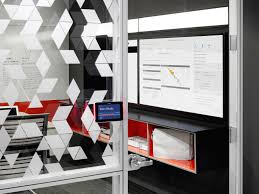
Breaking News
 SanDisk stuffed 1 TB of storage into the smallest Type-C thumb drive ever
SanDisk stuffed 1 TB of storage into the smallest Type-C thumb drive ever
 Upcoming RV trailer will make its own power to take you off the grid
Upcoming RV trailer will make its own power to take you off the grid
 Musk: AI Satellites Would "Adjust" Sunlight to "Prevent Global Warming"
Musk: AI Satellites Would "Adjust" Sunlight to "Prevent Global Warming"
Top Tech News
 HUGE 32kWh LiFePO4 DIY Battery w/ 628Ah Cells! 90 Minute Build
HUGE 32kWh LiFePO4 DIY Battery w/ 628Ah Cells! 90 Minute Build
 What Has Bitcoin Become 17 Years After Satoshi Nakamoto Published The Whitepaper?
What Has Bitcoin Become 17 Years After Satoshi Nakamoto Published The Whitepaper?
 Japan just injected artificial blood into a human. No blood type needed. No refrigeration.
Japan just injected artificial blood into a human. No blood type needed. No refrigeration.
 The 6 Best LLM Tools To Run Models Locally
The 6 Best LLM Tools To Run Models Locally
 Testing My First Sodium-Ion Solar Battery
Testing My First Sodium-Ion Solar Battery
 A man once paralyzed from the waist down now stands on his own, not with machines or wires,...
A man once paralyzed from the waist down now stands on his own, not with machines or wires,...
 Review: Thumb-sized thermal camera turns your phone into a smart tool
Review: Thumb-sized thermal camera turns your phone into a smart tool
 Army To Bring Nuclear Microreactors To Its Bases By 2028
Army To Bring Nuclear Microreactors To Its Bases By 2028
 Nissan Says It's On Track For Solid-State Batteries That Double EV Range By 2028
Nissan Says It's On Track For Solid-State Batteries That Double EV Range By 2028
'Cloaking' Film for Windows Blacks Out the Screens Within

THE MODERN WORKPLACE has a cultural problem. Open-plan offices and glass-walled conference rooms promote transparency, but they also make it impossible to conduct business privately. Anything requiring discretion—quarterly reports, year-end bonuses, or secret projects—calls for ominous workarounds. "We've all had the experience of walking into an office and there's brown butcher paper taped up to the conference room glass," says Matt Mead. "Everyone's antenna kind of goes up."
Mead runs the in-house design incubator at office equipment company Steelcase, which created a solution to this problem: Casper Privacy Film. Apply it to the walls of the office fishbowl and you can see everything in there except LED and LCD screens. The CEO can run through the quarterly budget slides without concern, because they'll look like black boxes to anyone looking in from the outside. The idea, Steelcase suggests, is that offices don't have to sacrifice security for transparency, and vice versa.

SLIDE:1 / OF4. Caption:DESIGNTEX

SLIDE:2 / OF4. Caption:DESIGNTEX

SLIDE:3 / OF4. Caption:DESIGNTEX

SLIDE:4 / OF4. Caption:DESIGNTEX

Casper, developed by Steelcase subsidiary Designtex, comes in two layers. A transparent sheet, available in 15 loosely arranged geometric prints, covers the exterior side of the glass. A "cloaking" film coats the interior. The company won't say how the Casper technology works or what's in the film, but it blocks the wavelengths of light emitted by LED and LCD screens. Screens stay camouflaged, while the room's inhabitants, and their body language and facial expressions, remain visible. In function, Casper earns comparisons to privacy screens that you attach to your laptop. Those deter shoulder surfers, as well, but use lenticular graphics to block out any peripheral peeping.

 America's 'Ceausescu Moment'
America's 'Ceausescu Moment' Carbon based computers that run on iron
Carbon based computers that run on iron

